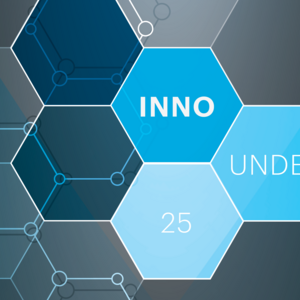
This is the final installment of our series on customer discovery and lean startup concepts, and now it’s time to offer guidance on how entrepreneurs can decide whether this approach or a business plan or design thinking can best contribute to success of your venture. We will identify entrepreneurs and situations that might skip customer discovery altogether. And, we can highlight resources to help those who commit to customer discovery and lean startup.
An innovation-driven venture needs to be approached as a search for customers, problem-solution fit and a viable business model. Only when that is accomplished can the entrepreneur effectively move to the execution phase of customer creation and company building. Prior installments described how evidence-based entrepreneurship works by “getting out of the building” to learn systematically from customers and the marketplace.
Although the effectiveness of this approach is well-documented, it is not right for every situation. Consider a franchise business. The franchisor has already defined the brand, the target customer segments, the product or service and most operational considerations. We do not recommend the lean startup and customer discovery processes for someone opening a new location of an existing franchise.
Consider the hopeful entrepreneur who has developed a product (or service) that he or she believes in passionately. This entrepreneur is certain the world is ready for the next new “thing.” Our experience says that this person will not benefit from customer discovery. This entrepreneur will rarely listen, preferring to sell the benefits of their new product. Occasionally, this passionate entrepreneur is right. When they are wrong, and their initial entry fails, the school of hard knocks may teach them to start over using customer discovery.
Entrepreneurs are often asked if they have a business plan, and, if not, are advised to create one. The business plan has been the standard for decades. I have written plans for my own ventures, and I have read hundreds. The fundamental problem with the business plan, however, is that a bright entrepreneur can develop a complete plan, with sales and financial projections, without knowing if anyone wants their product or service. A business plan may be suitable for a replicative business, such as a franchise, where the facts already exist about customer needs and other key factors. But it is never the right starting point for an innovation-driven venture.
The lean startup/customer discovery process leads the entrepreneur through the creation of the business model canvas (described in last week’s article). If a business plan is needed for bankers, investors or others, the right time to create the plan is after the business model is defined.
Organizations of all sizes, including startups, have increasingly used design thinking as a process to develop and implement innovative products and services. Design thinking emphasizes doing versus planning, is experiential and prototype-oriented, and expects to iterate to achieve a better solution. Many people refer to a seven-stage design thinking process that includes: define, research, ideation, prototype, select, implement and learn. The concepts described in previous installments align nicely with the early stages of design thinking. In our view, customer discovery and design thinking are complementary methods.
The most successful approach for innovation-driven entrepreneurs is to engage early and often with the world outside your office. The emphasis must be on listening and learning to ensure that you address a meaningful problem or opportunity. You must understand this before testing your proposed solution. A minimum viable product, which may include a prototype, is an important part of validating problem-solution fit and customer acceptance. The business model canvas is an excellent tool for organizing your learning and for development of a business model. Customer discovery provides the tools for systematically testing and revising your hypotheses.
This approach has been adopted by the National Science Foundation to improve the commercialization of the nation’s research investment. It has been used by thousands of teams through the I-Corps program at 80-plus universities, including UNC Charlotte. The NC IDEA Foundation has adopted this approach as it evaluates proposals for its semi-annual Seed Grant program.
Resources are available in print (Business Model Generation by Alexander Osterwalder & Yves Pigneur, The Startup Owner’s Manual by Steve Blank and Bob Dorf, and many others), online (Strategyzer, Startups.co Customer Discovery Primer), and locally (Ventureprise Launch NC IDEA cohorts offered spring, summer and fall).
Get out of the building, listen, learn, and then launch your venture.
Paul Wetenhall is the former executive director of Ventureprise, UNC Charlotte’s innovation and entrepreneurship center serving the UNC Charlotte campus and Charlotte region.
For more stories like this one, subscribe to StartCharlotte’s free weekly startup newsletter.








